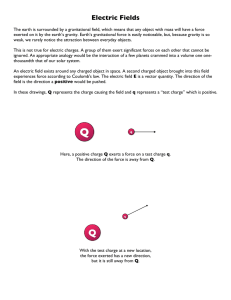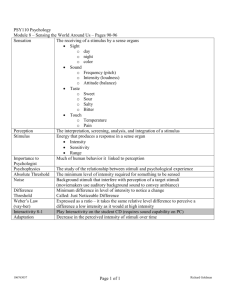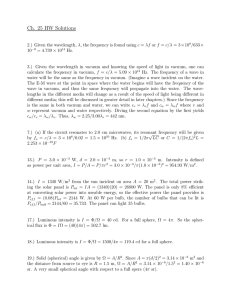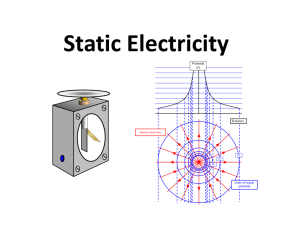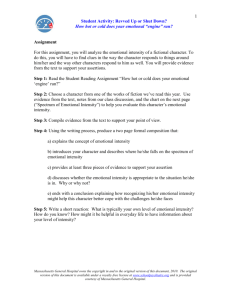Electric fields 1
advertisement
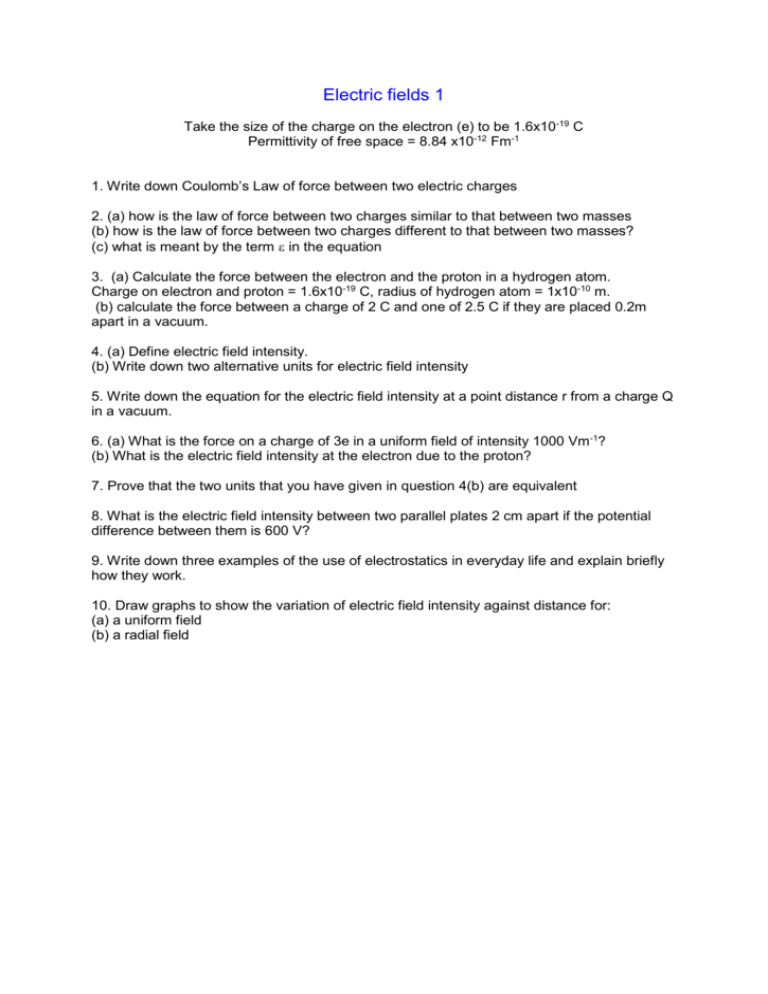
Electric fields 1 Take the size of the charge on the electron (e) to be 1.6x10-19 C Permittivity of free space = 8.84 x10-12 Fm-1 1. Write down Coulomb’s Law of force between two electric charges 2. (a) how is the law of force between two charges similar to that between two masses (b) how is the law of force between two charges different to that between two masses? (c) what is meant by the term in the equation 3. (a) Calculate the force between the electron and the proton in a hydrogen atom. Charge on electron and proton = 1.6x10-19 C, radius of hydrogen atom = 1x10-10 m. (b) calculate the force between a charge of 2 C and one of 2.5 C if they are placed 0.2m apart in a vacuum. 4. (a) Define electric field intensity. (b) Write down two alternative units for electric field intensity 5. Write down the equation for the electric field intensity at a point distance r from a charge Q in a vacuum. 6. (a) What is the force on a charge of 3e in a uniform field of intensity 1000 Vm-1? (b) What is the electric field intensity at the electron due to the proton? 7. Prove that the two units that you have given in question 4(b) are equivalent 8. What is the electric field intensity between two parallel plates 2 cm apart if the potential difference between them is 600 V? 9. Write down three examples of the use of electrostatics in everyday life and explain briefly how they work. 10. Draw graphs to show the variation of electric field intensity against distance for: (a) a uniform field (b) a radial field
